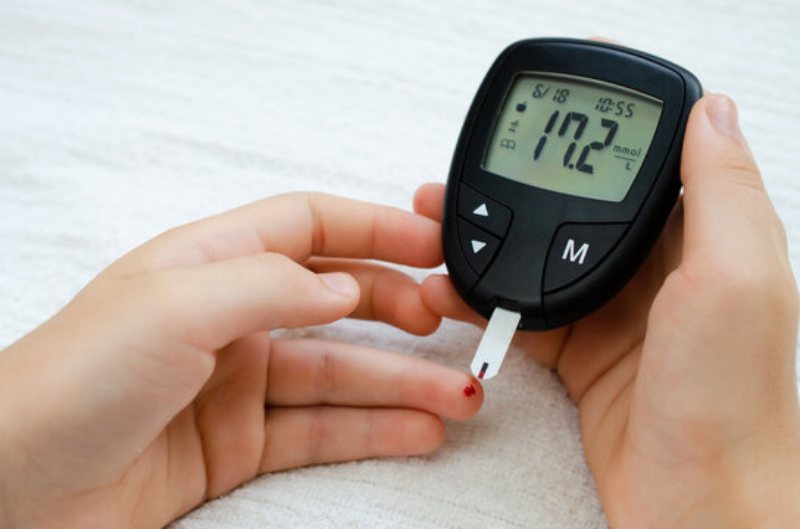While home testing can be a valuable tool for people with diabetes, it’s important to understand that it’s not a definitive diagnostic tool for the condition. This guide delves into the world of home blood sugar monitoring, explaining the different types of tests, how to use them effectively, and the limitations to consider.
Why Test Blood Sugar at Home?
Home blood sugar monitoring is a crucial aspect of diabetes management for many individuals. It allows them to:
- Monitor Blood Sugar Levels: Regularly checking blood sugar levels helps assess how effectively the body is processing glucose (sugar) and identify potential trends.
- Adjust Treatment Plans: Based on blood sugar readings, individuals with diabetes can, in consultation with their doctor, adjust their medication dosage, diet, or exercise regimen.
- Identify Patterns: Monitoring blood sugar throughout the day helps identify how food, exercise, and other factors impact blood sugar levels.
- Prevent Complications: Early detection and management of high blood sugar levels can help prevent long-term complications associated with diabetes.
It’s Important to Note:
- Home testing is not a substitute for a doctor’s diagnosis. If you suspect you have diabetes, consult a doctor for proper diagnosis, which typically involves blood tests at a laboratory.
- Home testing results alone shouldn’t be used to make major treatment decisions. Always consult your doctor to interpret your readings and adjust your diabetes management plan as needed.
Types of Home Blood Sugar Tests
There are two main types of home blood sugar tests:
- Blood Glucose Monitoring: This is the most common type of home testing for diabetes. It involves pricking your finger to draw a small drop of blood, placing it on a test strip, and inserting the strip into a meter that displays your blood sugar level.
- Continuous Glucose Monitoring (CGM): This newer technology involves wearing a sensor inserted under the skin that continuously measures blood sugar levels throughout the day and transmits the data to a receiver or smartphone app.
Blood Glucose Monitoring with Test Strips and Meters:
Here’s a breakdown of the process:
- Gather Your Supplies: You’ll need a blood glucose meter, lancing device (used to prick your finger), lancets (tiny needles), test strips, and alcohol swabs for cleaning the fingertip.
- Wash Your Hands: Thoroughly wash your hands with warm water and soap to prevent infection.
- Prepare the Lancing Device: Insert a new lancet into the lancing device and set the depth according to your doctor’s instructions.
- Prick Your Finger: Use the lancing device to prick the side of your fingertip.
- Apply Blood to the Test Strip: Touch the test strip to the blood droplet as instructed by the manufacturer.
- Insert the Strip into the Meter: Insert the test strip into the meter and wait for the result to appear on the screen.
- Record Your Results: Record your blood sugar level, date, and time in a logbook or app for future reference.
- Dispose of Supplies Safely: Dispose of used lancets and test strips in a designated sharps container.
Tips for Accurate Blood Sugar Testing:
- Follow Device Instructions: Each meter and test strip brand might have slightly different instructions. Always follow the specific instructions provided with your device.
- Rotate Fingertip Sites: Prick different areas on your fingertips throughout the week to avoid calluses and discomfort.
- Calibrate Your Meter Regularly: Most meters require periodic calibration using a control solution provided by the manufacturer.
- Control the Testing Environment: Avoid testing during extreme temperatures or high humidity, which can affect results.
Understanding Your Blood Sugar Results
Blood sugar levels are typically measured in milligrams per deciliter (mg/dL). The American Diabetes Association (ADA) recommends the following target blood sugar ranges:
- Before meals: 80-130 mg/dL
- Two hours after meals: Less than 180 mg/dL
It’s important to note:
- These are general guidelines. Your target blood sugar range may vary depending on your individual circumstances and diabetes type. Always consult your doctor for personalized recommendations.
- Blood sugar levels can fluctuate throughout the day. Don’t be alarmed by occasional variations.
What to Do with Your Blood Sugar Results:
- Discuss with Your Doctor: Share your blood sugar readings with your doctor at regular appointments. They will interpret the results and adjust your diabetes management plan if necessary.
- Identify Trends: Track your blood sugar readings over time to identify patterns. This can help you understand how food, exercise, and other factors affect your blood sugar levels.
- Take Action: Based on your readings and doctor’s advice, While home blood sugar monitoring offers valuable benefits, it has limitations to consider:
- Accuracy: Home test strips and meters may have slight variations in accuracy compared to laboratory tests.
- User Error: Improper test technique or not following device instructions can lead to inaccurate readings.
- Limited Information: Home tests only provide a snapshot of your blood sugar level at a specific point in time. They don’t offer the comprehensive picture provided by a doctor’s evaluation.
Seek Medical Attention If You Experience:
- Symptoms of Diabetes: If you experience excessive thirst, frequent urination, unexplained weight loss, blurred vision, or fatigue, consult your doctor immediately. These could be signs of undiagnosed diabetes.
- Rapid Blood Sugar Fluctuations: If your blood sugar levels are consistently very high or very low, or fluctuate rapidly, seek medical attention to prevent complications.
- Difficulty Managing Blood Sugar: If you’re struggling to maintain your target blood sugar range despite following your diabetes management plan, consult your doctor to adjust medication or other aspects of your plan.
- Illness or Infection: Illness or infection can significantly impact blood sugar levels. If you’re unwell, monitor your blood sugar more frequently and consult your doctor if your readings are outside your target range.
Continuous Glucose Monitoring (CGM) Systems
While traditional blood glucose monitoring involves finger pricks, CGM systems offer a more continuous approach:
- How it Works: A small sensor is inserted under the skin, typically in the abdomen or arm. The sensor measures glucose levels in the interstitial fluid (fluid between cells) every few minutes and transmits the data wirelessly to a receiver or smartphone app.
- Benefits of CGM:
- Real-time Data: Provides continuous blood sugar readings throughout the day and night, offering a more comprehensive picture of blood sugar trends.
- Alerts: Can be programmed to send alerts for high or low blood sugar levels, allowing for prompt intervention.
- Improved Management: Can help users identify patterns and factors affecting blood sugar, leading to better management strategies.
- Things to Consider with CGM:
- Cost: CGM systems and sensors can be expensive. Insurance coverage may vary.
- Sensor Insertion: Sensor insertion requires a doctor’s visit.
- Calibration: CGM systems still require periodic calibration with finger pricks.
- Not for Everyone: CGM systems may not be suitable for everyone, particularly those with skin sensitivities or difficulty inserting the sensor.
Additional Considerations:
- New Technologies: The field of diabetes management is constantly evolving. Explore new technologies and discuss them with your doctor to see if they might be a good fit for you.
- Psychological Impact: Home testing and monitoring can sometimes lead to anxiety or stress. It’s important to find a balance and not become obsessed with blood sugar numbers.
Conclusion
Home blood sugar testing can be a valuable tool for people with diabetes to manage their condition effectively. However, it’s crucial to understand the limitations of home testing and use it in conjunction with regular doctor visits and a comprehensive diabetes management plan.
Disclaimer:
This information is not a substitute for professional medical advice. Always consult your doctor before starting home blood sugar monitoring or making any changes to your diabetes management plan.

 Diabetology2 weeks ago
Diabetology2 weeks ago
 Diabetology1 week ago
Diabetology1 week ago
 Diabetology5 days ago
Diabetology5 days ago
 Diabetology6 days ago
Diabetology6 days ago
 Diabetology6 days ago
Diabetology6 days ago
 Diabetology3 days ago
Diabetology3 days ago
 Diabetology3 days ago
Diabetology3 days ago
 Diabetology1 day ago
Diabetology1 day ago














